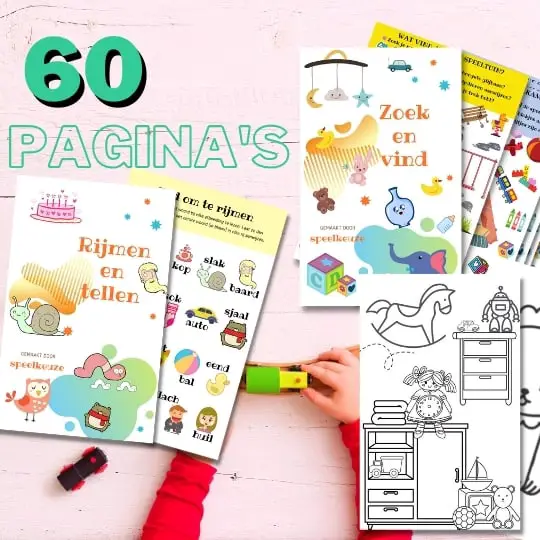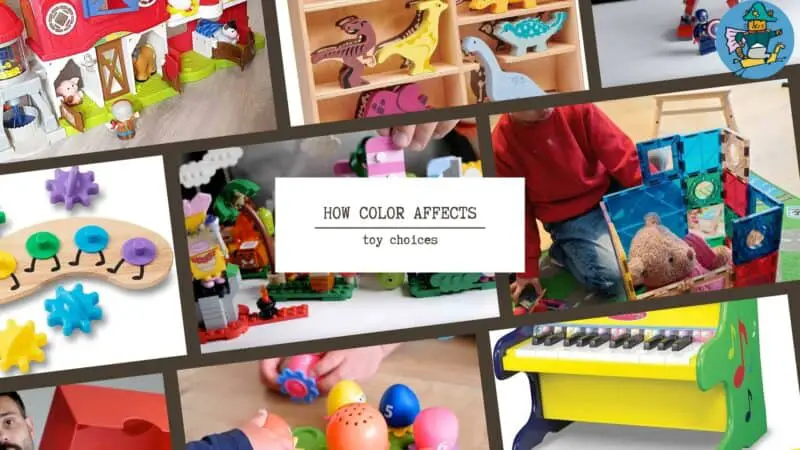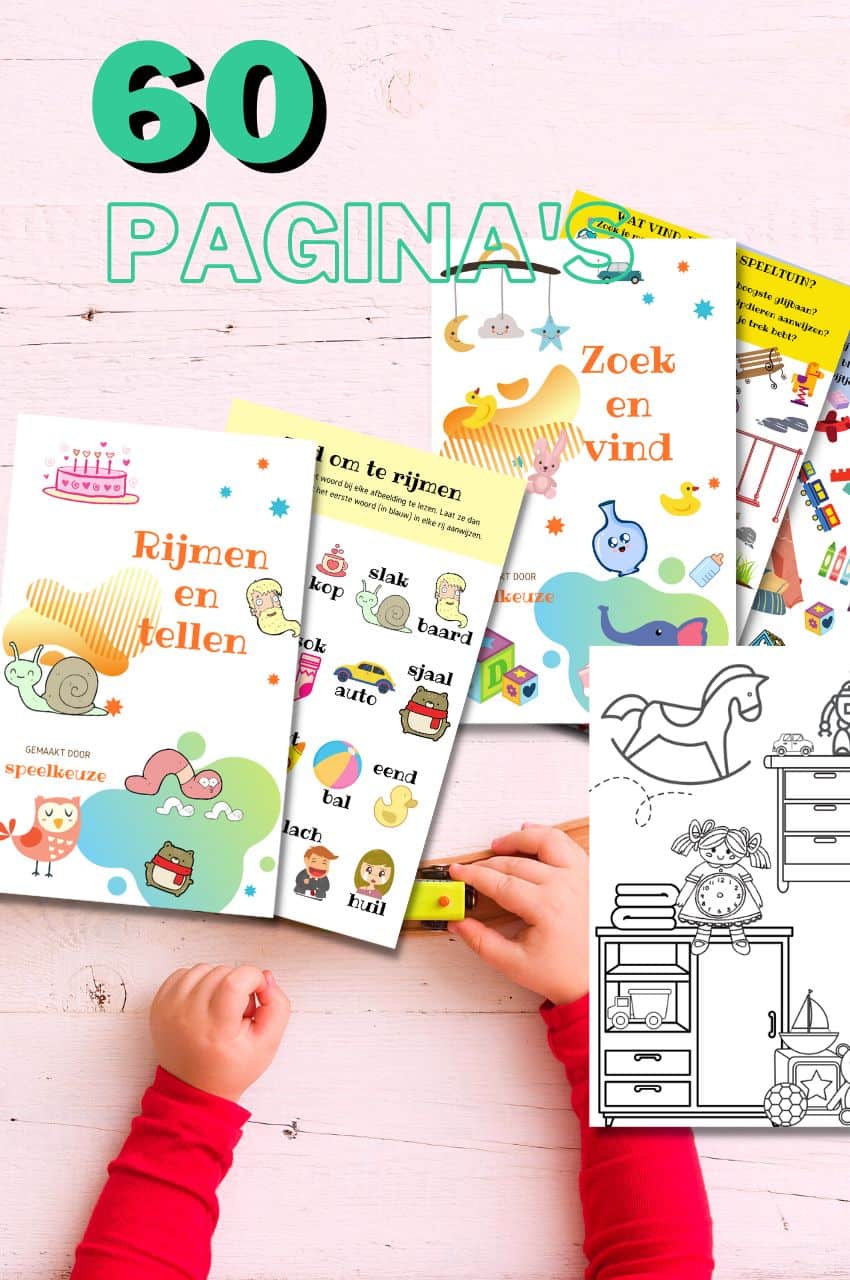How color influences toy choice and play value for children

Always something to do for the holidays or rainy day?
Play Choice now has the ultimate activity book collection, with over 60 pages of fun coloring pages and educational puzzles.
Colors influence the choice and playability of toys in several ways, including high-contrast toys for baby development, gender-driven toys, the influence of color on play itself, and toys for color recognition development.
The research by Fulcher and Hayes (2018) shows that toy color and type can influence how children interact and play with toys. Colorful toys are important because they help with color learning and encourage skill development.
For newborns, black and white high-contrast toys are ideal for playing and seeing the contours.
Parents are often influenced by colors when buying toys because it's part of marketing communications, and many parents also opt for gender-typical toys.
Colors also go well with other features of sensory toys, such as sounds and textures, providing additional opportunities for play and creativity.


From toddler to toddler activity book collection
Educational games and coloring pages for 3 to 6 years
Your toddler and preschooler will love this e-book, along with the accompanying printables. He or she can play with it at every stage of development, together with mom and dad.
Buy at Bol.comWhat we discuss in this comprehensive post:
What is the importance of colorful toys?
The importance of colorful toys is that it influences development and play. Colorful toys stimulate children's development by capturing their attention and stimulating their senses. They also provide opportunities for creativity and imagination, which are crucial for learning and understanding information.
Research by Wong, W., & Hines, M. (2015) “Effects of Gender Color-Coding on Toddlers' Gender-Typical Toy Play” has shown that gender color-coding of toys can influence children's play preferences, with boys and girls often inclined to choose toys that match the typical colors assigned to their gender.
Removing gender color coding can ensure more equal learning experiences between boys and girls.
In addition, colorful toys can help with color learning and the early stages of development when babies develop the ability to see colors.
What kind of toys can help with color learning?
There are different toys that can help with color learning as listed below.
- Puzzles: Puzzles with pictures of different colors can help children recognize and match colors.
- Sorting and stacking games: These games teach children to sort, recognize and stack colors.
- Color Recognition Games: These games help children recognize and name colors.
- Sensory toys: Toys with different textures and colors help children stimulate their senses and learn colors.
- Paint and Draw Activities: Through painting and drawing, children can explore and experiment with colors.
- Interactive Books: Books with colorful pictures and stories can help children learn colors and increase their understanding.
According to a study by Scientific American, most children have difficulty learning colors. The English language system, where adjectives are placed before nouns can make it difficult for children to learn colors and numbers.
Parents can help their children by reversing the descriptions of colored objects, for example saying “the fire engine that is red” instead of “the red fire engine”.
How do colored toys help early developmental stages?
Toys are great for stimulating growth in the early developmental stages, and colored toys have additional benefits such as stimulating sensory development and improving visual perception.
Colored toys attract children's attention and encourage them to explore and focus their attention. They also help develop cognitive skills, motor skills and language skills.
Dr. Sears Wellness Institute indicates that the use of colors in toys plays an important role in promoting children's development in the early stages.
What colors can babies see at different ages?
During the first year of life, babies undergo remarkable perceptual developments.
According to a study by Adams et al. (1994), newborns can detect some colors immediately after birth. Although their color perception is limited, colored stimuli require high saturation, significant size, and specific hues such as red to be noticed. According to Yuodelis & Hendrickson (1986), this is due to immature cone receptors in both the retina and cerebral cortex of newborns.
In humans, color vision is usually aided by three types of cone receptors that respond to different wavelengths. Teller (1998) found that newborns first develop the red-green coloring mechanism and later, between 4 and 8 weeks, the blue-yellow mechanism. Around 3 months of age, babies become trichromatic, meaning both color mechanisms are active.
Knoblauch et al. (2001) found that children do not reach adult levels of their ability to perceive desaturated colors until late adolescence.
According to Zemach et al. (2007), newborns around the same time, about 3 months old, show signs of more advanced perceptual processing of color. They seem to use color information in a way that points to understanding the dimension of hue apart from brightness and saturation.
Brouwer & Heeger (2009) found that this may indicate a shift in the development and organization of the visual cortex of 4-month-old infants.
At about 4 months, babies also begin to react categorically to colors. Research by Bornstein et al. (1976) and Maule & Franklin (2019) suggests that they group distinguishable colors into five basic color categories: red, green, blue, yellow and purple.
Skelton, Maule & Franklin, in their study “Infant color perception: Insight into perceptual development” cite that by 6 months, infants can perceive and categorize the dimensions of color, and have rudimentary mechanisms for keeping color perceptually constant despite variations in lighting.
Why are black and white toys also good for newborn development?
Black and white toys are perfect for a baby's development as they have a high contrast that stimulates visual development.
Optometrist Emma Davies BSc MCOptom explains at The Little Sensory Box that in the first weeks of life, newborns can only see items that are distinguishable by clear color contrast, with black and white being the optimal combination. After a few months, babies can start to perceive colors, but black and white toys are a great way to stimulate their vision and encourage interaction and bonding.
The high contrast draws their attention and provides an interesting target for exploration and 'play' at a very young age. In addition, black and white toys can also stimulate other senses.
What is a high contrast toy?
High contrast toys have strong contrasts between colors, such as black and white patterns or bright colors. They help babies develop and can be used from birth. These toys can attract babies' attention, stimulate their visual perception and promote brain growth.
How do parents let color influence their toy buying process?
Parents are letting colors influence their toy purchasing decisions by seeking out visually stimulating, bright and contrasting toys that capture children's attention and curiosity. Colors can spark children's imagination, explore patterns and promote creativity.
According to Bellizzi & Crowley (2012), parents allow colors to influence their decisions when buying toys by considering the perceptual impact and gender associations of colors.
More generally, Bellizzi et al. (2012) have found that colors have the power to attract customers and create brand images in product design. This is explained biologically and psychologically by the way colors affect our perception.
Gender has long attracted attention in research, especially in toy selection. A study by Auster and Mansbach (2012) shows that the color choice of toys focuses on gender stereotypes. Toys that were largely "gender neutral" in type displayed color palettes traditionally associated with boys, probably to appeal to boys.
Kollmayer (2018) mentioned that many studies already show that parents still prefer gender-specific toys for their children as illustrated in a study by Cagle (nd), which shows that parents do not directly indicate they buy toys based on gender, but some purchases still fit into gender stereotypes. For example, parents choose trucks for boys and "girly" items such as pink handbags and dolls for girls.
In addition to color, other sensory characteristics also play a role in parents' purchasing processes.
What other features do sensory toys for newborns have?
Sensory toys have different features designed to stimulate baby's senses and support their development.
The three main features of sensory toys are: using different textures and materials to provide tactile stimulation, bright and contrasting colors to promote visual stimulation, and sounds and rattles to provide auditory stimulation.
Babies can learn from sensory toys through interaction and exploration, which can help develop their motor, cognitive and sensory skills.

Always something to do for the holidays or rainy day?
Play Choice now has the ultimate activity book collection, with over 60 pages of fun coloring pages and educational puzzles.
Joost Nusselder, the founder of Speelkeuze.nl is a content marketer, father and loves trying out new toys. As a child he came into contact with everything related to games when his mother started the Tinnen Soldaat in Ede. Now he and his team create helpful blog articles to help loyal readers with fun play ideas.
